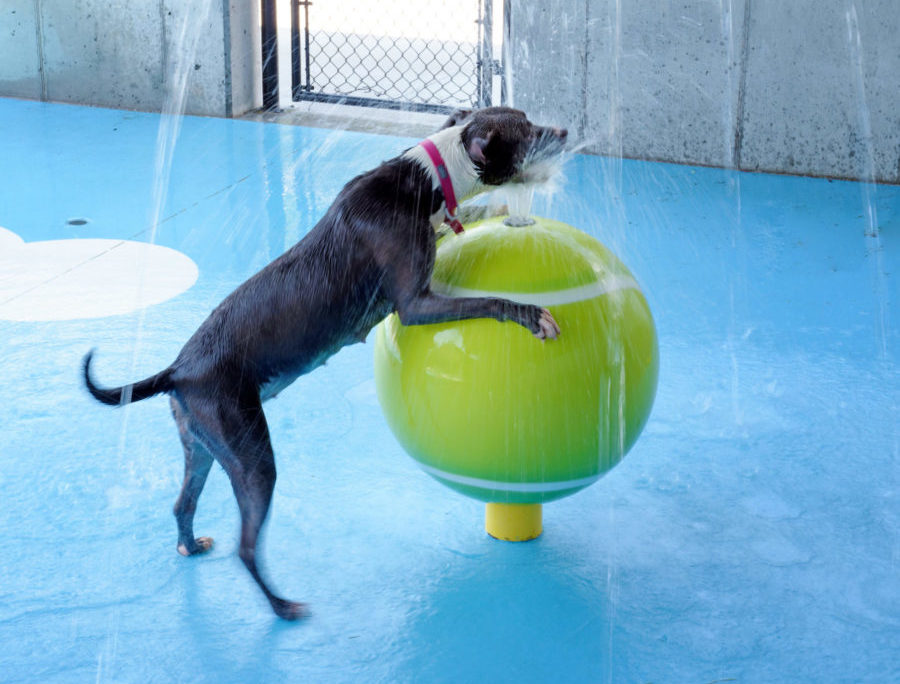
- We are more aware of the need to provide quality enrichment to sheltered animals.
- Shelters are providing more behavioral care for dogs.
- Play reduces fear, anxiety, and stress.
- Play helps dogs feel more comfortable in the shelter environment.
We love designing for play. There are many small design nuances but here are some basic highlights:
- Play Group Space. Play groups must be set up with the support of staff and volunteers, with proper training, as well as within the proper environment. Ideally, play groups will have the following:
- A series of interconnected yards (rather than one large yard) to customize play groups based on dogs’ sizes and size needs.
- Visual barriers between yards and kennels.
- Double-gated entrances for safety.
- Access to water via kiddie pools for the dogs to cool off and to provide a large water source that is less likely to be guarded.
- Shading and reasonable surfaces are important as well. K9Grass (a brand of faux grass) is our favorite, but only if it is installed correctly so that it drains and does not collect water. It also needs to be shaded or it can get too hot for paws.
- Safe fencing that keeps dogs contained without risk of escape.
- Water Play. Water play works well for dogs who enjoy play groups and for those who do not. We have started incorporating splash parks for sheltered dogs (see photo). It is spectacular to witness a formerly fearful sheltered dog interacting playfully with water. Splash park plans must be created by people who know how to design for dogs, as they have different types of plumbing, surfacing, and play structures than those designed for children. When we design a splash park, we consider the following:
- Incorporate additional space around the water feature so the dogs can go in and out of the water. This enhances choice.
- Safe surfacing is critical. Our favorite is a soft, grip-textured surface designed for dogs.
- The water itself should be safe. It is not recirculated, so it is best to have the water provide watering to landscaping once it has been used in park fountains.
- Individual Play Spaces. We know that some dogs do better with one-on-one time than they do in groups, and we know that water features cannot be used during cold winters. Therefore, do not forget to provide these spaces for your sheltered dogs:
- Walking Paths. These should be loop type with multiple forks along the loop, so that dogs do not have to pass each other side to side. Good walks provide exercise, connection, and some Fear Free training opportunities.
- Ball Throwing Areas. We like to provide a larger yard (60’ long minimum) for flying disc or ball throwing.
- Small (20×20, for example), more fully enclosed yards. These are great for gentle socializing with fearful dogs who may retreat in large yards, or for adoption meet and greet.
As we continue to improve the Fear Free shelter, dedicated play areas are a critical part of the design. It is best to designate outdoor areas for play so everyone gets fresh air, but if your shelter is land constrained, or in an urban location, playrooms can be indoor if necessary.
Regardless of your resources, find ways to incorporate play. For a dog, and especially one who is fearful, play is an important and often shorter path to happiness and comfort, as well as to finding the right forever home.
This article was reviewed/edited by board-certified veterinary behaviorist Dr. Kenneth Martin and/or veterinary technician specialist in behavior Debbie Martin, LVT.

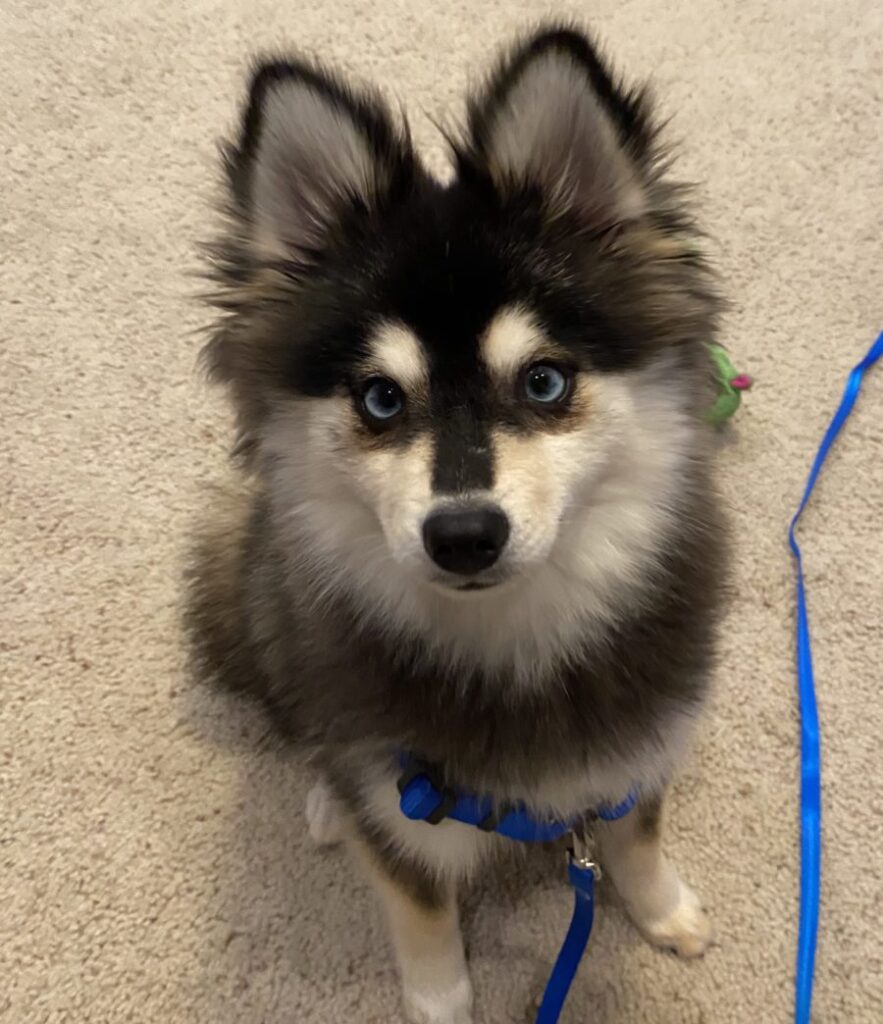
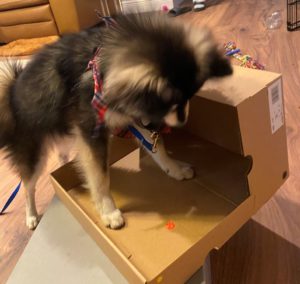 Oakley was generally fearful, so I set up boxes for nosework, a Snuffle Mat, a Wobbler, and a Spin-it. Oakley engaged with these items enthusiastically, demonstrating no fear. We did a few behaviors on the consent mat (sit, watch me, touch, and down), allowing Oakley to disengage and go to the boxes or Snuffle Mat if he needed to de-stress and return to the consent mat when he was ready to re-engage. I instructed the owner to practice all of the above between our sessions.
Oakley was generally fearful, so I set up boxes for nosework, a Snuffle Mat, a Wobbler, and a Spin-it. Oakley engaged with these items enthusiastically, demonstrating no fear. We did a few behaviors on the consent mat (sit, watch me, touch, and down), allowing Oakley to disengage and go to the boxes or Snuffle Mat if he needed to de-stress and return to the consent mat when he was ready to re-engage. I instructed the owner to practice all of the above between our sessions.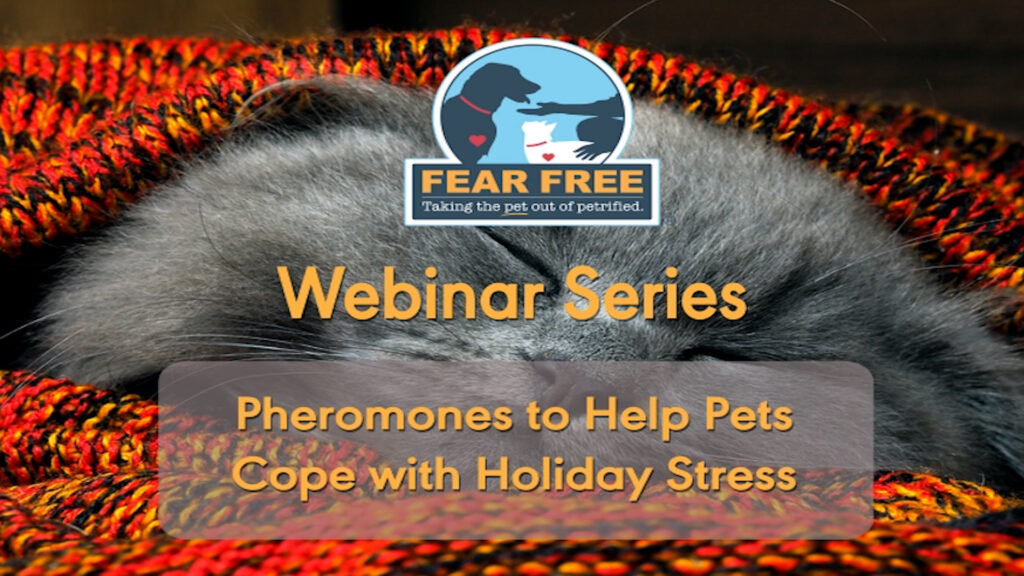
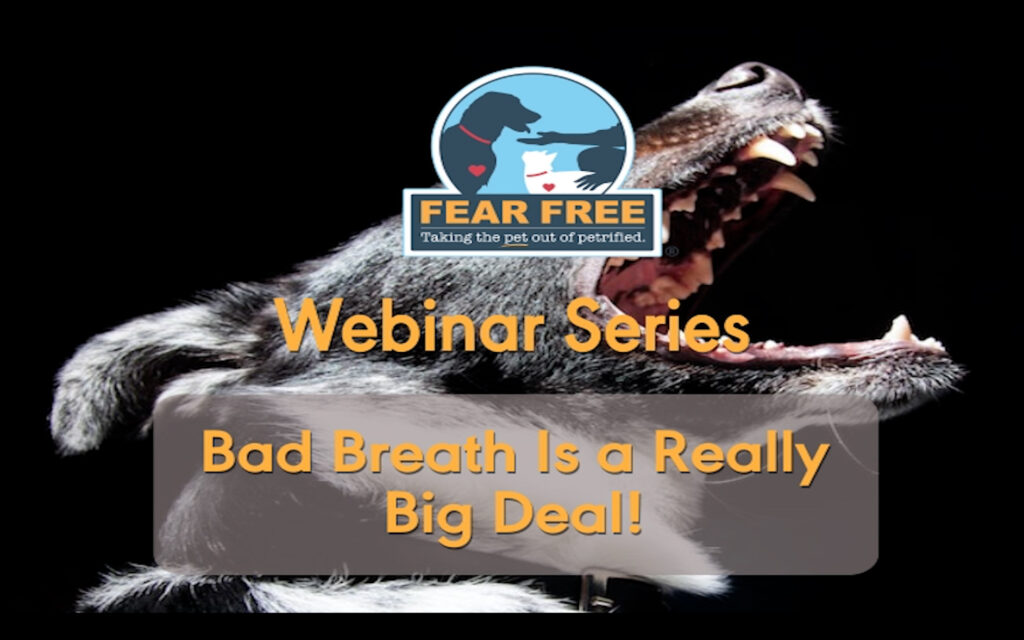
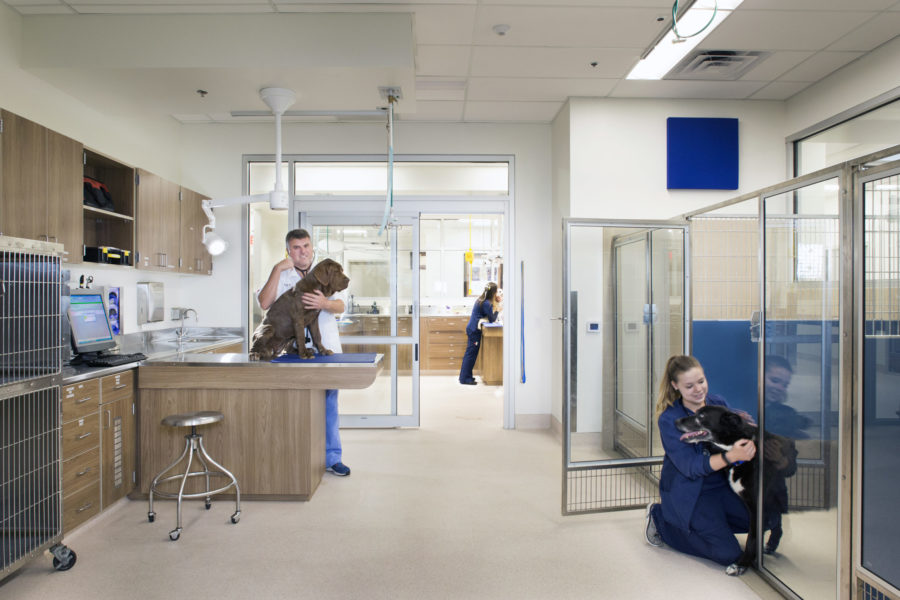
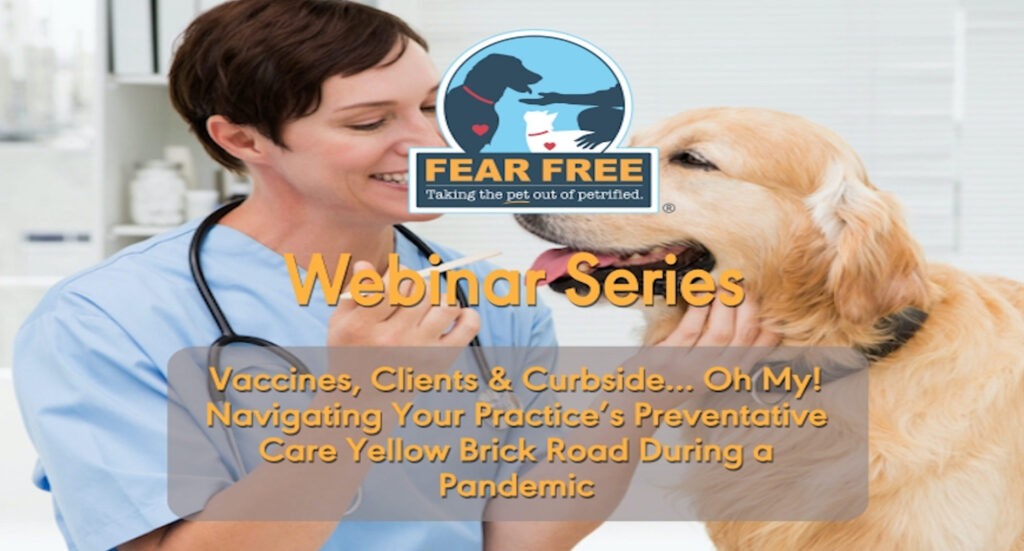
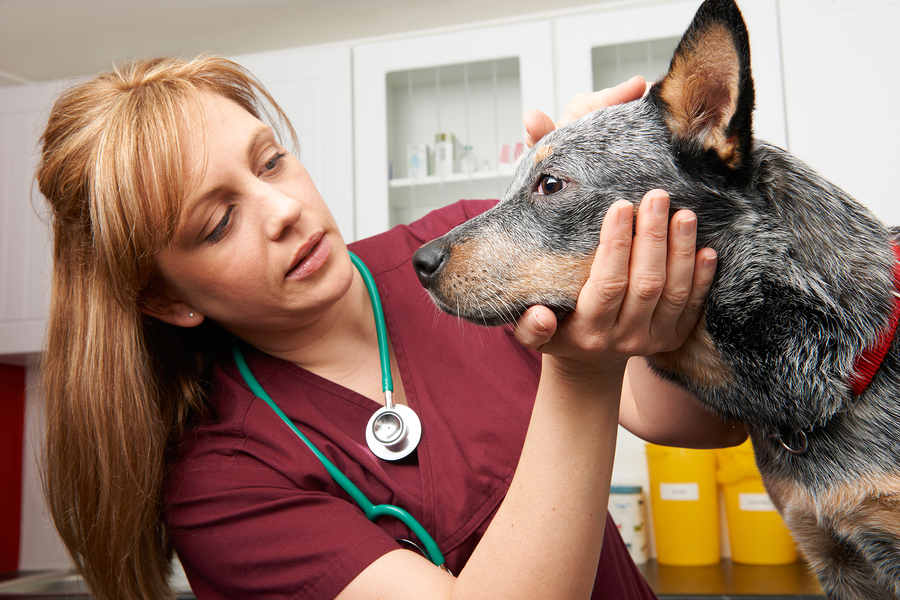

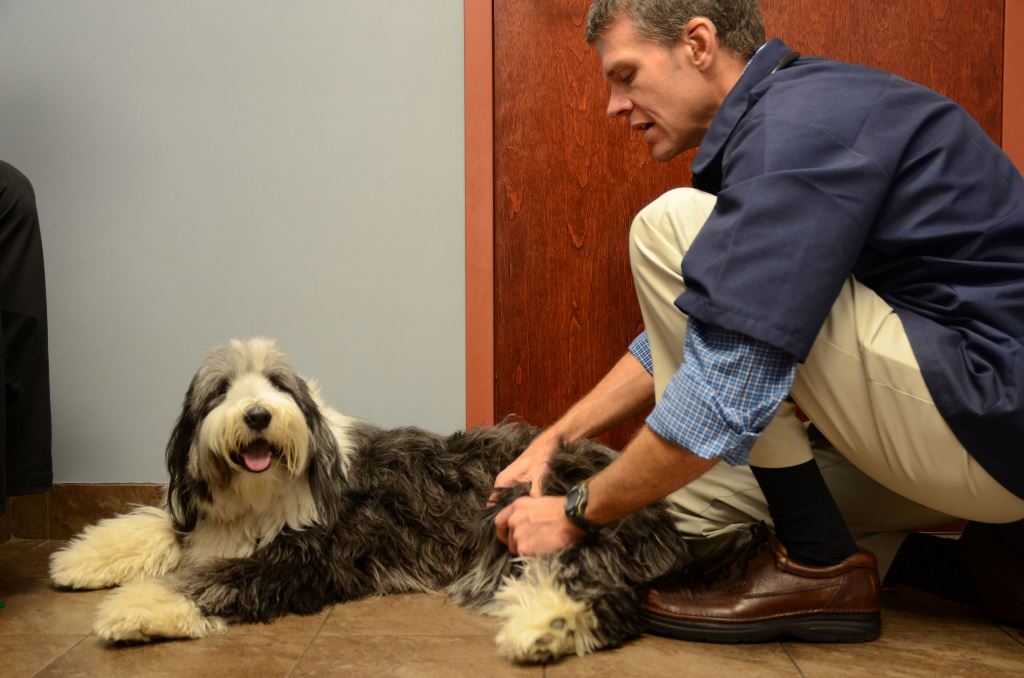
 A new feline patient with a high level of fear, anxiety, and stress went home with gabapentin as a pre-visit pharmaceutical. The exam we performed two days later was great. He was readily eating tuna and happy to be petted. He did well for a complete exam, including radiographs and blood draw. The Feliway-infused towel was also a great help.
A new feline patient with a high level of fear, anxiety, and stress went home with gabapentin as a pre-visit pharmaceutical. The exam we performed two days later was great. He was readily eating tuna and happy to be petted. He did well for a complete exam, including radiographs and blood draw. The Feliway-infused towel was also a great help.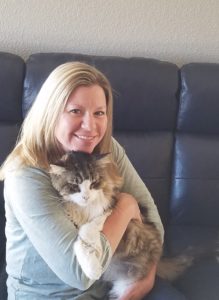 draws and vet visits. He was a wonderful-tempered cat at home, but at the clinic, while he never bit or scratched, he hissed and struggled every time he came out of the cage and became a difficult patient to handle. He is very food-motivated and after we started Fear Free practices and he got squirt cheese and baby food every time he was handled, he now purrs and rubs on everyone when he comes for treatments and is so much happier and easier to handle. I am overall so much more aware of a patient’s anxiety level the moment they walk in the door now, and it gives us a chance to start finding ways to alleviate their stress before it escalates.
draws and vet visits. He was a wonderful-tempered cat at home, but at the clinic, while he never bit or scratched, he hissed and struggled every time he came out of the cage and became a difficult patient to handle. He is very food-motivated and after we started Fear Free practices and he got squirt cheese and baby food every time he was handled, he now purrs and rubs on everyone when he comes for treatments and is so much happier and easier to handle. I am overall so much more aware of a patient’s anxiety level the moment they walk in the door now, and it gives us a chance to start finding ways to alleviate their stress before it escalates. in patients, while others felt I was “too soft,” “only cared about giving the animals treats,” or “was crazy or misguided in my efforts.” Fellow faculty members sometimes shared these sentiments and even accused me of not being able to “get the job done” when I would elect to postpone or re-plan a procedure for an animal. The revolution of awareness that Fear Free has helped to create in our profession has changed the way I am viewed by students and colleagues. No longer the “crazy Dr. Griffin,” I am the one they ask to teach them about low-stress handling and Fear Free techniques. The art and science of Fear Free have become valued: this is truly a gift for all of us, our patients, and their owners. I look forward to the day when Fear Free is taught in all veterinary colleges and is fully embraced as an indispensable standard of care in veterinary practice.
in patients, while others felt I was “too soft,” “only cared about giving the animals treats,” or “was crazy or misguided in my efforts.” Fellow faculty members sometimes shared these sentiments and even accused me of not being able to “get the job done” when I would elect to postpone or re-plan a procedure for an animal. The revolution of awareness that Fear Free has helped to create in our profession has changed the way I am viewed by students and colleagues. No longer the “crazy Dr. Griffin,” I am the one they ask to teach them about low-stress handling and Fear Free techniques. The art and science of Fear Free have become valued: this is truly a gift for all of us, our patients, and their owners. I look forward to the day when Fear Free is taught in all veterinary colleges and is fully embraced as an indispensable standard of care in veterinary practice.